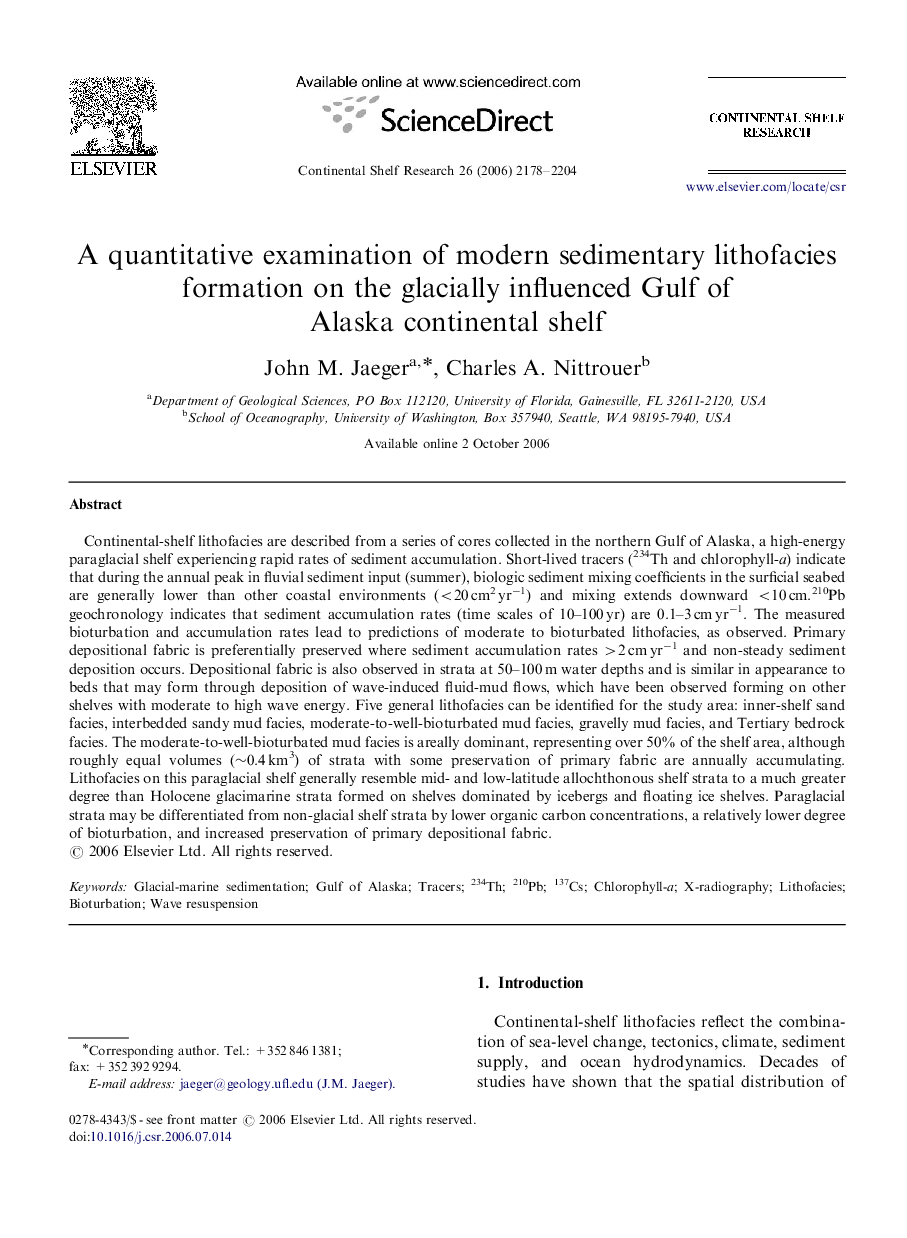| کد مقاله | کد نشریه | سال انتشار | مقاله انگلیسی | نسخه تمام متن |
|---|---|---|---|---|
| 4533922 | 1626190 | 2006 | 27 صفحه PDF | دانلود رایگان |

Continental-shelf lithofacies are described from a series of cores collected in the northern Gulf of Alaska, a high-energy paraglacial shelf experiencing rapid rates of sediment accumulation. Short-lived tracers (234Th and chlorophyll-a) indicate that during the annual peak in fluvial sediment input (summer), biologic sediment mixing coefficients in the surficial seabed are generally lower than other coastal environments (<20 cm2 yr−1) and mixing extends downward <10 cm.210Pb geochronology indicates that sediment accumulation rates (time scales of 10–100 yr) are 0.1–3 cm yr−1. The measured bioturbation and accumulation rates lead to predictions of moderate to bioturbated lithofacies, as observed. Primary depositional fabric is preferentially preserved where sediment accumulation rates >2 cm yr−1 and non-steady sediment deposition occurs. Depositional fabric is also observed in strata at 50–100 m water depths and is similar in appearance to beds that may form through deposition of wave-induced fluid-mud flows, which have been observed forming on other shelves with moderate to high wave energy. Five general lithofacies can be identified for the study area: inner-shelf sand facies, interbedded sandy mud facies, moderate-to-well-bioturbated mud facies, gravelly mud facies, and Tertiary bedrock facies. The moderate-to-well-bioturbated mud facies is areally dominant, representing over 50% of the shelf area, although roughly equal volumes (∼0.4 km3) of strata with some preservation of primary fabric are annually accumulating. Lithofacies on this paraglacial shelf generally resemble mid- and low-latitude allochthonous shelf strata to a much greater degree than Holocene glacimarine strata formed on shelves dominated by icebergs and floating ice shelves. Paraglacial strata may be differentiated from non-glacial shelf strata by lower organic carbon concentrations, a relatively lower degree of bioturbation, and increased preservation of primary depositional fabric.
Journal: Continental Shelf Research - Volume 26, Issues 17–18, November 2006, Pages 2178–2204